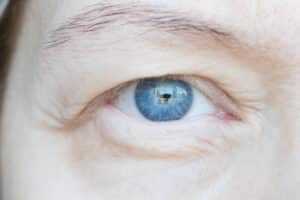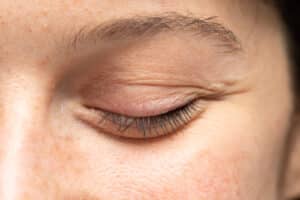Your eyelids are a vital part of your body that protect your eyes and keep them lubricated. However, a problem with your eyelids’ functionality can have a range of effects.
You can experience irritation, impaired vision, and more. Fortunately, there is a way to treat drooping eyelids, eyelid malpositioning, and abnormal growths on the eyelid.
Surgical reconstruction can restore the functionality of your eyelids. That way, you can see and feel better. Keep reading to learn more about functional eyelid reconstruction!
What Is Ptosis Repair Surgery?

Ptosis is an eyelid condition that occurs when the muscles responsible for moving the eyelid become weakened. The weakening of these muscles can cause the upper eyelid to droop.
The drooping of the eyelids can give the eyes a sleepy-looking appearance. Depending on the severity of the drooping, the eyelids may hinder, interfere or block vision.
You can have ptosis at any age, and infants can be born with it. In adults, it can result from aging, as the muscles in your eye stretch and lose strength over time.
Ptosis can also result from trauma to the eye or, in rare instances, certain diseases or the presence of a tumor. The ptosis repair procedure aims to improve symptoms caused by ptosis, including the reduced field of vision.
During ptosis repair, your eye surgeon will tighten a critical eyelid muscle so that it returns to a normal position and does not hinder vision. This muscle is the levator muscle and is responsible for lifting your eyelid.
How Do an Upper Eyelid Blepharoplasty and Brow Lift Work?
In addition to or separate from ptosis, a patient may have excess eyelid skin. This is referred to as dermatochalasis.

Dermatochalasis is most common in patients over the age of forty. Similar to ptosis, when there is excess skin present around your eyes, this can encroach upon your field of vision.
This can affect your peripheral or, in more severe cases, central vision. The best treatment for dermatochalasis is often a brow lift and removal of this excess skin.
The latter surgery is an upper eyelid blepharoplasty. The combination of these procedures allows many patients to see significantly better.
During the blepharoplasty procedure, your eyelid surgeon will create an incision in your eyelid and remove excess skin and fat. Your oculoplastic surgeon will hide the incision in your eyelid crease, and the scar will be barely noticeable once it is healed.
The most common method for a browlift includes creating an incision in the hairline. Similar to blepharoplasty, your oculoplastic surgeon will hide the incision scar and and it will be barely noticeable.
How Is Eyelid Malpositioning Treated?
Healthy eyelids maintain a normal position. It is possible, though, for an individual’s eyelids to have an abnormal position.
Abnormally positioned eyelids can cause irritation, infection, and tearing, among other symptoms.
Entropion

One condition is called entropion. Entropion occurs when the eyelids turn inwards. This eye condition can happen in both eyes or just one.
As a result, the skin and eyelashes irritate the eye. In addition to irritation, you may feel like something is in your eyes.
You may experience light sensitivity, watery eyes, and redness as well.
Ectropion
With ectropion, the opposite occurs. The eyelid turns outwards.
As a result, the vulnerable inner surface is exposed to the air and possible irritants. In addition to entropion symptoms, a patient may experience dryness.
Both conditions typically only affect the lower eyelid. They are more common in older adults.
In the majority of cases, the only way to address the cause of eyelid malpositioning is through surgery. There are multiple surgeries available to reposition your eyelids and correct placement.
Surgical intervention will allow your eyes to feel comfortable once again. The type of eyelid surgery that is best for you will depend on the cause of your condition.
How Does Reconstructive Surgery Work?
Lesions on the eyelid are abnormal growths that can develop for various reasons. They can result from infection, or tumors, whether benign or, more rarely, malignant.

If you have eyelid lesions, your eye doctor may recommend reconstructive surgery. Your ophthalmic plastic surgeon at Takle Eye Group is trained to remove lesions.
After thoroughly evaluating your eyes, they may advise you to consider eyelid surgery. The procedure is often performed on an outpatient basis, meaning you can go home the same day.
Most people only require local anesthesia, and most will also not require stitches, as the skin can heal on its own. For those diagnosed with eyelid cancer, your ophthalmic plastic surgeon will work closely with your Mohs dermatologic surgeon to deliver the best possible treatment.
Your Mohs surgeon will remove the skin cancer. They will take care to preserve the surrounding healthy tissue.
Your ophthalmic plastic surgeon will then reconstruct your eyelid from both a functional and cosmetic standpoint.
Are your eyelids getting in the way of your vision? Schedule a consultation at Takle Eye Group in Griffin, GA, today to find out if functional eyelid reconstruction may benefit you.




